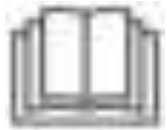velleman VTSUSB USB POWERED SOLDERING IRON User Manual
1. Introduction
To all residents of the European UnionImportant environmental information about this product
![]() This symbol on the device or the package indicates that disposal of the device after its lifecycle could harm the environment. Do not dispose of the unit (or batteries) as unsorted municipal waste; it should be taken to a specialized company for recycling. This device should be returned to your distributor or to a local recycling service. Respect the local environmental rules.
This symbol on the device or the package indicates that disposal of the device after its lifecycle could harm the environment. Do not dispose of the unit (or batteries) as unsorted municipal waste; it should be taken to a specialized company for recycling. This device should be returned to your distributor or to a local recycling service. Respect the local environmental rules.
If in doubt, contact your local waste disposal authorities.Thank you for choosing Velleman! Please read the manual thoroughly before bringing this device into service. If the device was damaged in transit, do not install or use it and contact your dealer.
2. Safety Instructions
This device can be used by children aged from 8 years and above, and persons with reduced physical, sensory or mental capabilities or lack of experience and knowledge if they have been given supervision or instruction concerning the use of the device in a safe way and understand the hazards involved. Children shall not play with the device.Cleaning and user maintenance shall not be made by children without supervision.
 Read and understand this manual and all safety signs before using this appliance.
Read and understand this manual and all safety signs before using this appliance.
 Indoor use only. Keep this device away from rain, moisture, splashing and dripping liquids. Never put objects filled with liquids on top of or close to the device.
Indoor use only. Keep this device away from rain, moisture, splashing and dripping liquids. Never put objects filled with liquids on top of or close to the device.
 Always disconnect mains power when the device is not in use or when servicing or maintenance activities are performed. Handle the power cord by the plug only.Caution! After switching off, leave the power cord plugged in for a few minutes. When you switch off the unit, the automatic cooling function blows cooling air through the heater pipe for a short period. This protects the heater from damage and extends its lifetime. Do not disconnect the mains plug during this cooling process.
Always disconnect mains power when the device is not in use or when servicing or maintenance activities are performed. Handle the power cord by the plug only.Caution! After switching off, leave the power cord plugged in for a few minutes. When you switch off the unit, the automatic cooling function blows cooling air through the heater pipe for a short period. This protects the heater from damage and extends its lifetime. Do not disconnect the mains plug during this cooling process.
Do not crimp the power cord and protect it against damage.Warning! If the power cord is damaged, it must be replaced by the manufacturer, its service agent, or similarly qualified persons in order to avoid and hazard.Make sure that the available voltage does not exceed the voltage stated in the specifications of this manual.Plug the power cord into a suitable, earthed mains outlet.Risk of electroshock when opening the cover.Touching live wires can cause life-threatening electroshocks. Do not disassemble or open the housing yourself. Have the device repaired by qualified personnel.Do not operate the device with wet hands.
Never use the device on live electronic circuits.Make sure power to the work piece is cut and capacitors are discharged.
Do not use near inflammable products or in explosive atmospheres. Heat can cause fire to inflammable products even when they are not in sight. Only use in properly ventilated rooms.
Incorrect use may cause fire.Do not touch the shafts, tips, or hot air gun as this can cause serious burns. Keep the tips and hot air away from the body, clothes, or other flammable material. Do not aim the hot air gun at the eyes.Use gloves and/or heat-resistant tools to pick up the PCB assembly to prevent burns. Always return the irons and gun to their stands between uses; always let the device cool down after use and before storage.Place the device on a level, stable, and fire resistant working surface.
WARNING! – This tool must be placed on its stand when not in use; do not leave the tool unattended when switched on.
 Do not inhale solder fumes. The vapours that are released during soldering are harmful. Therefore, you shall only use the soldering station in wellventilated areas or under an exhaust hood (solder fume extractor). Dispose of fume filters and solder residue in accordance with local regulations.
Do not inhale solder fumes. The vapours that are released during soldering are harmful. Therefore, you shall only use the soldering station in wellventilated areas or under an exhaust hood (solder fume extractor). Dispose of fume filters and solder residue in accordance with local regulations.
- Use the soldering iron on a heatproof workbench.
- Place the soldering iron in its holder after use.
- Let a hot soldering iron cool down naturally and do not immerse in water.
3. General Guidelines
Refer to the Velleman® Service and Quality Warranty on the last pages of this manual.
- Protect this device from shocks and abuse. Avoid brute force when operating the device.
- Keep this device away from rain, moisture, splashing and dripping liquids.
- Familiarise yourself with the functions of the device before actually using it.
- All modifications of the device are forbidden for safety reasons. Damage caused by user modifications to the device is not covered by the warranty.
- Only use the device for its intended purpose. Using the device in an unauthorised way will void the warranty.
- Damage caused by disregard of certain guidelines in this manual is not covered by the warranty and the dealer will not accept responsibility for any ensuing defects or problems.
- Nor Velleman nor its dealers can be held responsible for any damage (extraordinary, incidental or ndirect) – of any nature (financial, physical…) arising from the possession, use or failure of this product.
4. How to Solder
- File off any dirt, rust or paint on the parts you wish to solder.
- Heat the parts with the soldering iron.
- Apply resin-based solder to the part and melt it with the soldering iron.NOTE: Be sure to apply a solder paste to the part before applying non resin-based solder.
- Wait for the solder to cool and harden before moving the soldered part.CAUTION: Handle a heated soldering iron with extreme care as the high temperatures may cause burns.
- The soldering iron may produce smoke at first use due to a dried out heating element. This is normal and should only last for approx. 10 minutes.
- Never file the soldering tip.
- Use a soldering iron stand in order to avoid burns.
- The temperature of the soldering iron will drop if it is used without the tip.
- Let the soldering iron cool after use.
- The mains cable of this device should not be replaced. Discard the device if the power cable has been damaged.
- This appliance is not intended for use by persons (including children) with reduced physical, sensory or mental capabilities, or lack of experience and knowledge, unless they have been given supervision or instruction concerning use of the appliance by a person responsible for their safety.
- Children should be supervised to ensure that they do not play with the appliance.
- Cleaning and user maintenance shall not be made by children without supervision.
5. Tips
All tips have a special coating to prevent plastic sticking to the tip
- Knife: For cutting and removing sections including the removal of supports, brims and rafts from your 3D print.
- Needle: For clearing small holes or for detailed layer refinements in hard-to-reach places.
- Point: General purpose tip for larger internal features and holes. Can also be used to make holes after printing.
- Scoop: Perfect to remove stringing and imperfections from inside holes or recesses. Can also be used to blend surfaces.
6. Operating Temperature
The most common soldering alloys used in the electronics industry consist of 60 % tin and 40 % lead.The operating temperature of this type of solder is detailed below and can vary from manufacturer to manufacturer. However, to meet RoHS requirements, these solders are no longer allowed and are replaced by lead-free solders that require a working temperature which is ± 30 °C (54 °F) higher.
A good joint is assured if the iron’s operating temperature is set within the parameters suitable for the type of solder being used. The solder will flow too slowly if the temperature is too low; if the temperature is too high, the flux in the solder may burn which will give rise to billowing white smoke. In turn, this will result in a dry joint or in permanent damage to the PCB.
7. Maintenance
7.1 General Maintenance
- Soldering tips can be replaced simply by unscrewing the barrel nut assembly. Allow it to cool down first.
- After removing the tip, you should blow out any oxide dust that may have formed in the tip receptacle. Be careful not to get dust in your eyes. Replace the tip and tighten the screw. Pliers can be used to avoid contact with hot surfaces BUT SHOULD BE USED WITH CAUTION because overtightening may cause damage to the element or fuse the tip to the element.
- The outer cover of the iron may be cleaned with a damp cloth using small amounts of liquid detergent. Never submerse the unit in liquid. Never use any solvent to clean the case.
7.2 Tip Maintenance
The soldering iron uses extremely high temperatures. Make sure that the unit is switched off for maintenance purposes.Remove the tip and clean it after heavy or moderate use. We recommend cleaning the tip daily if used frequently.The supplied soldering tip is made of copper covered with a layer of iron. It will retain its projected life span if used properly.
- Always tin the tip before returning it to the holder, prior to turning off or to storing it for long periods.Wipe the tip on a wet sponge or use our tip cleaner before activating the device.• Using excessive temperatures (more than 400 °C or 750 °F) will shorten the life span of the tip.• Do not exercise excessive pressure on the tip while soldering, as this may cause damage to the tip.
- Never clean the tip with a file or with abrasive materials.
- Do not use flux containing chloride or acid. Use only resinous fluxes.
- If an oxide film has formed, you should remove it by buffing carefully with a 600-800 grit emery cloth or by using isopropyl alcohol and consequently applying a new protective layer of solder.
- The iron will be ready for use once the LED switches off.
IMPORTANT
Remove and clean the tip daily. Remove excess solder from the barrel nut assembly when installing a new tip, otherwise the tip may be fused to the heating element or to the retaining assembly.
7.3 Common Causes for Tip Failure
- The temperature of the tip exceeds 410 °C.
- The tip is not sufficiently tinned.
- Wiping the tip on a surface with a high sulphur content or on a dirty or dry sponge.
- Contact with organic or chemical substances such as plastic, resin, silicone and grease.
- Impurities in the solder and/or a low tin content.
8. Technical Specifications
power …………………………………………………………………………….. 8 Winput …………………………………… 5 VDC USB 2.0 (3.0 recommended)highest heating temperature ………………………………………. 380-400 °Cheating time …………………………………………………………………….. < 15 scooling time …………………………………………………………………….. < 30 sauto shut off (sleep mode) ……………………………………………… 25 s idledimensions ………………………………………….. 15 x 117 mm (without tip)weight ………………………………………………………………………………120 g
Use this device with original accessories only. Velleman nv cannot be held responsible in the event of damage or injury resulting from (incorrect) use of this device. For more info concerning this product and the latest version of this manual, please visit our website www.velleman.eu. The information in this manual is subject to change without prior notice.
COPYRIGHT NOTICEThe copyright to this manual is owned by Velleman nv. All worldwide rights reserved. No part of this manual may be copied, reproduced, translated or reduced to any electronic medium or otherwise without the prior written consent of the copyright holder.
References
[xyz-ips snippet=”download-snippet”]

